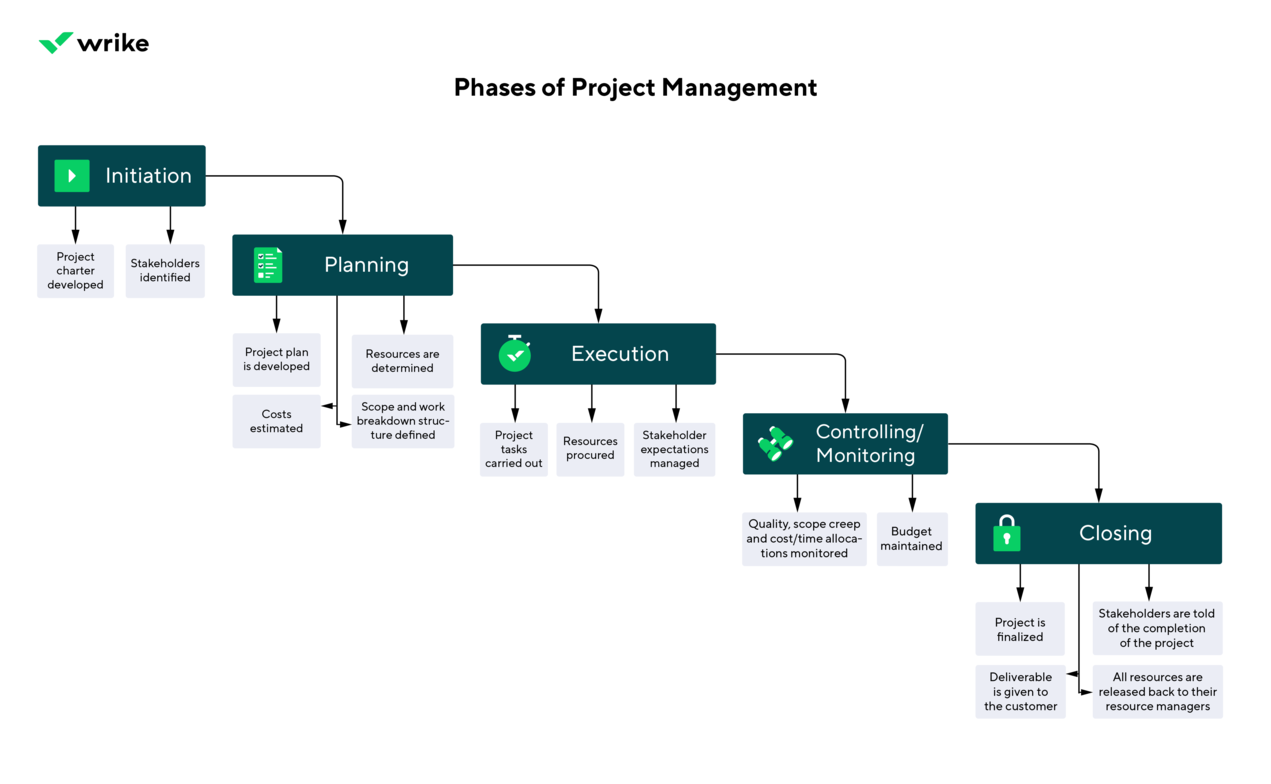What Are the Phases of Project Management?
What Are the Phases of Project Management?
Project management is often done in phases to improve control and quality. This means a large project is broken down into more manageable stages, each with a specific deliverable, and done in a specific sequence. At the end of each phase, a review is typically conducted on the deliverable and the performance of the project team. This helps the team ascertain whether the project proceeds to the next phase or undergoes revision. It also determines how to improve the performance of all involved. Altogether, the phases of a project are known as the project life cycle, and the industry-standard guide The Project Management Body of Knowledge (PMBOK) explains this in more detail.
The five project management phases
To make a project easier to plan and control, its work can be grouped into phases, with each phase having similar tasks and leading up to a major deliverable. The end of each phase is then marked by a project milestone. So what are the stages of project management? The five major phases in a project life cycle correspond to the project management process groups in the PMBOK. The phases of project management are:
Stage 1: Initiation
This phase of project management marks the beginning of the project and is where the project charter is developed, and stakeholders are identified.
Stage 2: Planning
This is where the project plan is developed. That means costs are estimated, resources are determined, and requirements (scope and work breakdown structure) are defined. This is also where risk is identified and planned for, and where communications are built.
Stage 3: Execution
This project phase is where the project is carried out, all while procuring resources and managing stakeholder expectations.
Stage 4: Controlling/Monitoring
This phase is often carried out simultaneously with execution because this is where quality, scope creep, and cost/time allocations are monitored.
Stage 5: Closing
This stage of project management is where the project is finalized, the deliverable is given to the customer, stakeholders are told of the completion of the project, and all resources are released back to their resource managers.

What is a project life cycle in project management?
If you're wondering what is a project life cycle in project management, it is the collection of phases that a project undergoes from initiation to closing. Another way to define a project life cycle is the collection of activities necessary to fulfill a project's objectives, from start to finish. Following the five phases of a project life cycle should enable your team to successfully complete a project, with data to help improve your project next time as well.
For more information on how to successfully drive your team through the five phases of project management, our Event Management Template can help you get started.


